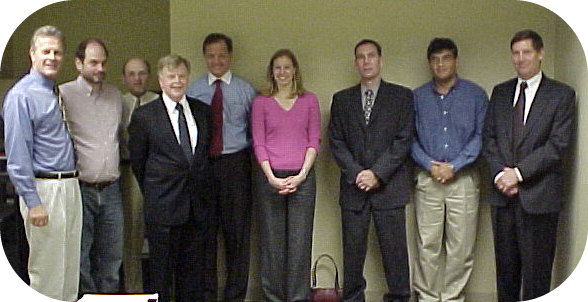E&EM doctoral student Michael S. Helwig successfully defended his doctoral research work on “The Energy Policy Act of 1992 and Executive Order 13149: Proposed Compliance Strategies and Process Improvements for Federal Agencies” on April 24, 2006. Mike, who received his Bachelor of Science degree form the University of Illinois in 1982 and his Master of Science degree from the Naval Postgraduate School in 1991, entered the E&EM doctoral program in the Fall 2002 semester and passed his Doctoral Qualifying Examination in the Spring 2005 semester.
Mike’s research was directed to the complex problem of federal agency compliance either the Energy Policy Act of 1992 (EPAct), under which 75 percent of Light Duty Vehicle (less than 8,500 pounds) acquisitions by federal agencies must be Alternative Fuel Vehicles (AFVs), and Executive Order 13149, which requires federal agencies to reduce petroleum consumption by 20 percent relative to a 1999 baseline, use alternative fuels (those not derived from petroleum) the majority of the time in their AFVs, and increase fuel economy of their conventional Light Duty Vehicles by 3 miles per gallon by 2005.
Most federal agencies met the EPAct 75 percent LDV acquisition requirement in 2004, however, most all agencies are not on track to achieve the 20 percent petroleum reduction and the 50 percent alternative fuel use requirements. In many cases, federal agencies are acquiring AFVs (that are typically more expensive than conventional vehicles), and then fueling those vehicles with conventional gasoline. Besides being a waste of taxpayer dollars, this approach does not meet the intent of EPAct, which was to reduce the dependence on foreign petroleum. Mike found that federal agencies lack an objective, quantitative methodology for AFV acquisitions and Executive Order 13149 compliance, and that a system of tiered optimization models could improve the process.
Federal fleet managers were asked by Mike to participate in a survey that would be used to identify various criteria that are important to them when developing an AFV acquisition strategy. Several optimization models were then constructed, focusing on the criteria identified by fleet managers and delineated in their agency’s annual EPAct compliance reports. The U. S. Navy was used as a test case for models that were designed to (1) meet EPAct requirements at a minimum cost, (2) maximize EPAct compliance subject to a given budget, and (3) maximize alternative fuel use.
An analysis of federal agency annual EPAct compliance reports and strategies, as well as the results of the tiered set of optimization models indicates that there are efficiencies that federal agencies could take advantage of when developing compliance strategies for EPAct and Executive Order 13149. These efficiencies would enable agencies to comply with EPAct requirements and improve Executive Order 13149 compliance at little to no increase in their current budget.
Mike’s doctoral examining committee included Dr. Hernan G. Abeledo, Associate Professor of Operations Research and Management Science; Dr. John Kane, Research Staff Member, Institute for Defense Analyses; Dr. Enrique Campos-Nanez, Assistant Professor of Operations Research and Management Science; Dr. Richard M. Soland, Professor of Operations Research; and Dr. Jonathan P. Deason, Lead Professor of the Environmental and Energy Management program
Mike recently had an article on his research accepted for publican in the Energy Policy Journal. The title of the article is “The Energy Policy Act of 1992 and Executive Order 13149: Proposed Compliance Strategies and Process Improvements for Federal Agencies.”


